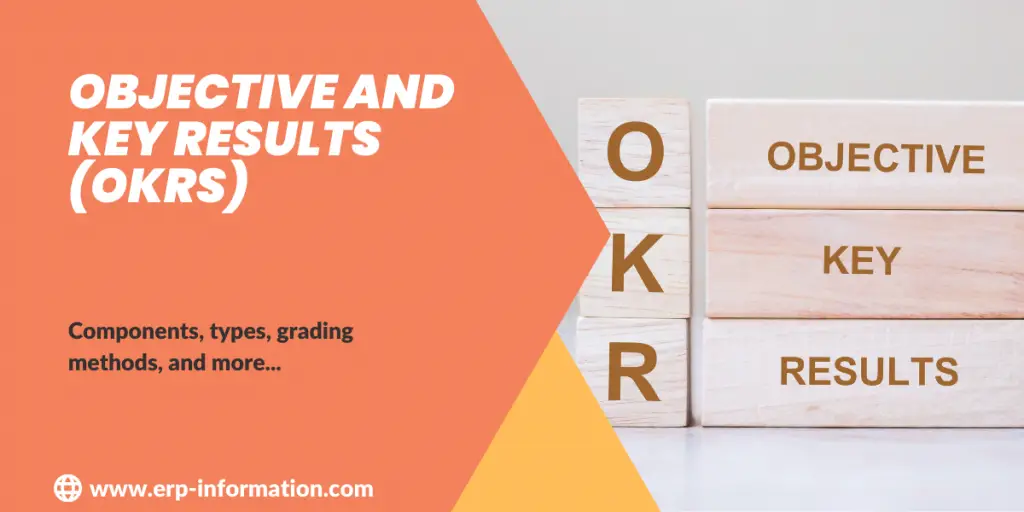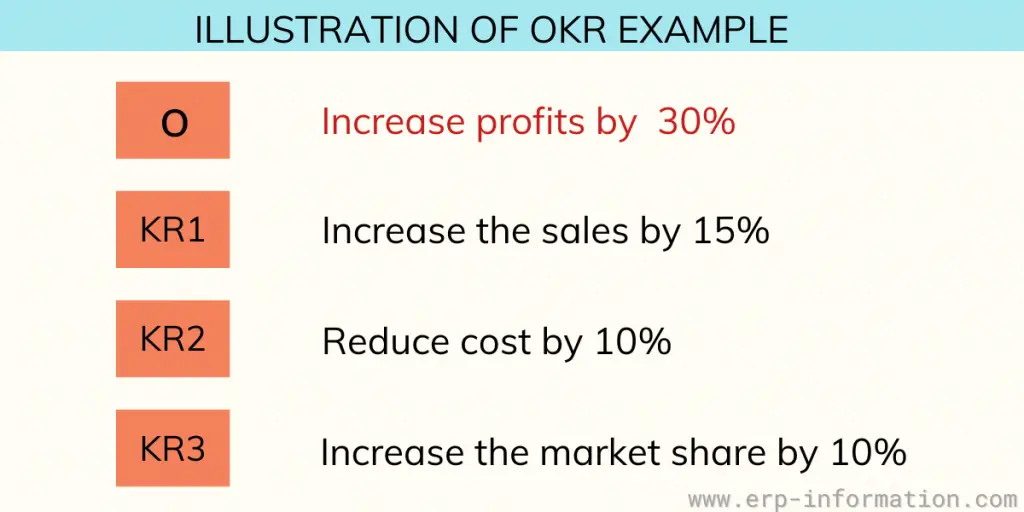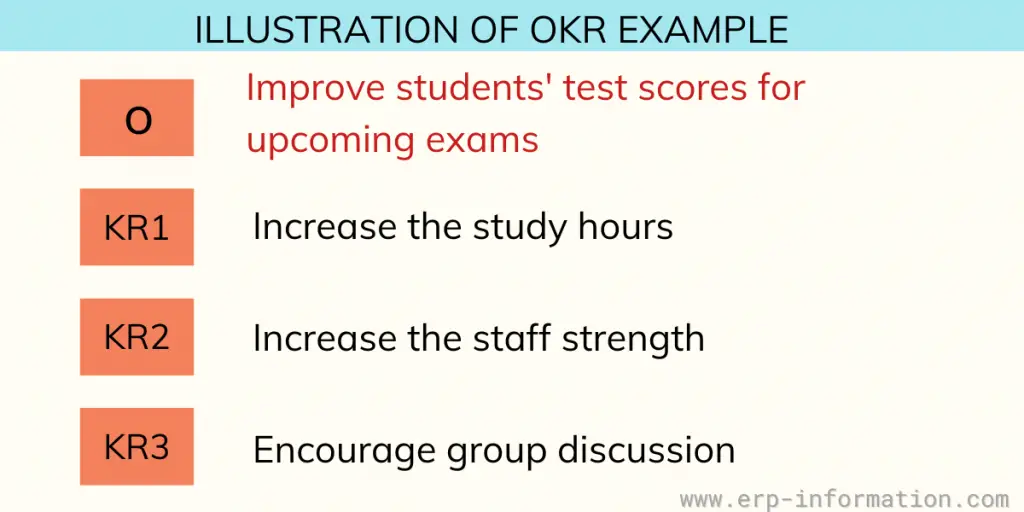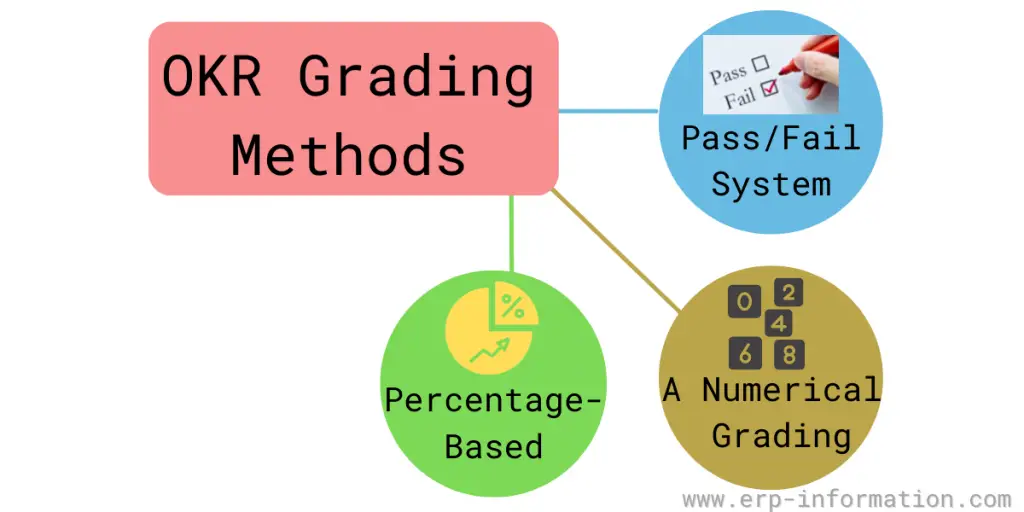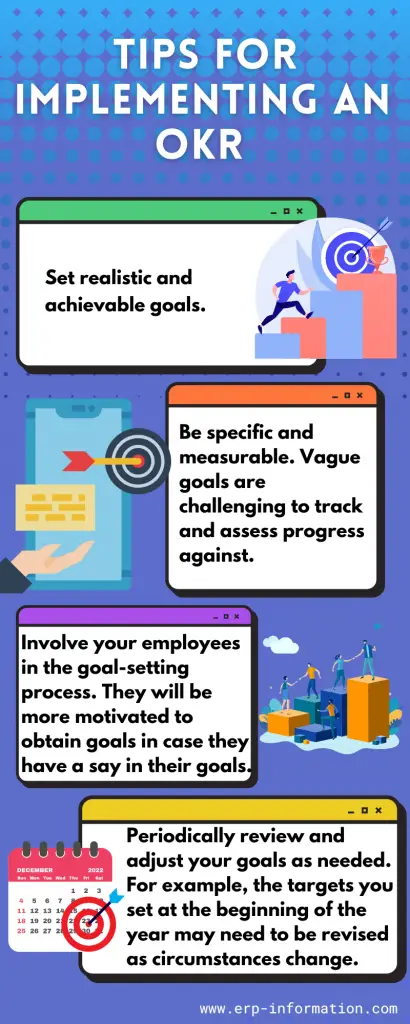Setting and achieving goals can be challenging, especially if you’re not sure of the best way to go about it.
Many people try to set goals without any system or structure, which often leads to them not being achieved.
OKRs are a simple and powerful way to set and track your goals. They’re used by some of the most successful companies in the world, like Google and Intel. It helps to efficiently measure your progress and ensure that you’re on track to achieve your objectives.
This blog post will define objectives and key results with examples, their components, and types, how to grade them, their setting, benefits, tips for implementing, some common pitfalls to avoid, and measure progress. It will also discuss the difference between OKR and KPI.
Definition
OKRs refer to a business strategy tool/framework used to measure and track progress toward specific objectives.
The overall goal of using this system is to help align the work of individuals and teams within an organization with the company’s strategic objectives to ensure everyone is working towards the same goals.
Each objective should be specific, measurable, achievable, relevant, and time-bound (SMART) and ideally be aligned with one or more key results.
Some companies choose to publicize their OKRs throughout the organization so that everyone knows what needs to be accomplished.
OKR Components
Before knowing about components, let us see the okr formula.
The formula is usually written with an objective at the top and 2 to 5 key results below it. You can express it in the form of a statement also. For example,
“I will (Objective) as measured by (Key Result 1, Key Result 2, Key Result 3, etc.).”
Here, the Objective is a clear, inspiring goal you want to achieve, and the Key Results are the specific, measurable actions that indicate progress toward that Objective. Each Objective typically has 2-5 key results.
Objectives
These are clear, concise statements of your goal. Make sure Objectives are aligned with the organization’s mission and vision and are ambitious yet achievable. They are intended to be qualitative and inspirational, providing direction and motivation.
Key results
These are specific, measurable actions that must be taken to achieve the Objective. They are the measures that will indicate whether you are progressing toward those objectives.
Each Objective usually has 2-5 key results. They should be quantifiable, time-bound, and challenging but realistic. Once all key results are achieved, the Objective is considered to be accomplished.
OKR Examples
Example 1
The first example would be a business setting where the objective may be to increase profits by a certain percentage. The key results could be increasing sales by a certain percentage, reducing costs, and increasing market share.
Example 2
Another example could be in a school setting where the objective may be to improve students’ test scores by a certain percentage. The key results could be increasing the study hours, increasing staff strength, and encouraging group discussion.
Types
Committed types are the specific, measurable goals a company sets for itself to achieve during a particular period.
Aspirational types are the higher and long-term goals that a company hopes to achieve.
The committed one should be achievable but challenging, while the aspirational type should be ambitious yet realistic. However, both types are essential for companies to track their progress and stay on course.
Grading Methods
- The pass/fail system allows employees to receive simple access or fail grades on their OKRs, which are often based on whether they met their objectives or not.
- A numerical grading system rates employees on how well they met their objectives, usually on a scale of 1 to 10. This grading system can provide more feedback to employees on how they can improve their performance.
- Percentage-based grading system grades employees on how well they achieve their objectives relative to other employees.
How do You Set the Business’ Objectives and Key Results?
- Define what you want your business to achieve. This might be in revenue, profit, market share, or other measures.
- Set specific, measurable objectives that you want to achieve.
- Set critical results you need to hit to achieve your objectives.
- Track your progress and revise your goals as necessary.
Benefits
- Clarify and simplify the goal-setting process
- Help track progress and identify areas of improvement
- Encourage and motivate employees to achieve results
- Facilitate better communication between managers and employees
Tips for Implementation
If you’re considering implementing an OKR system in your business, there are a few things to remember. Here are some tips:
- Set realistic and achievable goals.
- Be specific and measurable. Vague goals are challenging to track and assess progress against.
- Involve your employees in the goal-setting process. They will be more motivated to obtain goals in case they have a say in their goals.
- Periodically review and adjust your goals as needed. For example, the targets you set at the beginning of the year may need to be revised as circumstances change.
Common Pitfalls to Avoid While Using OKRs
Not setting measurable goals
Without measurable goals, it’s impossible to track and assess progress.
Not setting timeframes
Without timeframes, it’s challenging to know when goals are due or whether they’ve been accomplished.
Not linking goals to business objectives
Without linking goals to business objectives, it isn’t easy to ensure that they’re contributing to the company’s success.
Not involving all stakeholders
Without involving all stakeholders, it’s challenging to ensure that everyone has a sense of ownership and responsibility for the goals.
Setting goals that are too ambitious
Without setting achievable goals, it’s challenging to make progress and measure success.
Not revisiting goals regularly
Without reviewing plans regularly, it isn’t easy to ensure they’re still relevant and achievable.
How do you Track and Measure Progress Toward OKRs?
- Use a goal-tracking tool or app to track your progress.
- Regularly review your objectives and results to ensure that they still reflect what you want to achieve.
- Set milestones to track your progress and ensure you’re on track.
- Measure your progress against your objectives and expected results.
- Celebrate successes and learn from failures to progress.
Many okr tools are available in the market to help you track and measure your progress.
OKRs vs KPIs
| OKRs | KPIs |
| It stands for Objectives and Key Results. | KPI stands for Key Performance Indicators. |
| It is a framework for setting goals and measuring progress. | KPIs are specific metrics used to track progress toward those goals. |
| Typically used by organizations as a whole. | Individual teams or individuals use KPIs. |
FAQs
What is the history of the Objective and key results?
1. Its history dates back to the early 1970s when Intel CEO Andy Grove developed the concept to help track and improve the company’s performance.
2. They have become increasingly popular recently as more companies adopt them to measure and track progress.
Name the best Objectives and key result tools available.
Various tools are available, including software platforms and templates. Some popular options include Jira, Asana, Trello, and Google Sheets.
What are the application sectors of OKRs?
There are many application sectors, depending on the organization and what they are looking to achieve. Some specific application sectors include Sales, Marketing, Operations, Human Resources, Information Technology, Finance, Legal, and Product Development.
Conclusion
Setting and accomplishing goals is essential for any organization, yet it can be challenging to create practical goals. OKRs provide a framework that makes goal setting more concrete and measurable.
They also have the added benefit of helping to focus and align an organization around a standard set of objectives. So, if you want to improve your goal-setting process or learn more about Objectives and key results, this blog post is for you!
